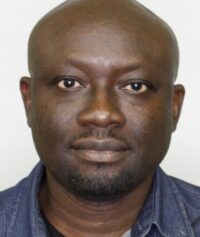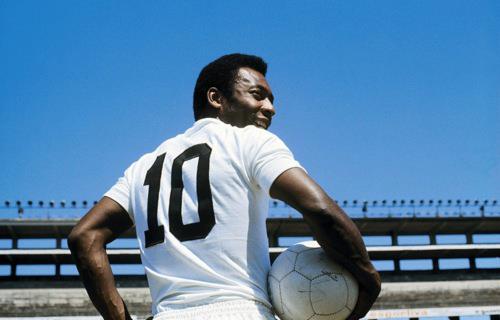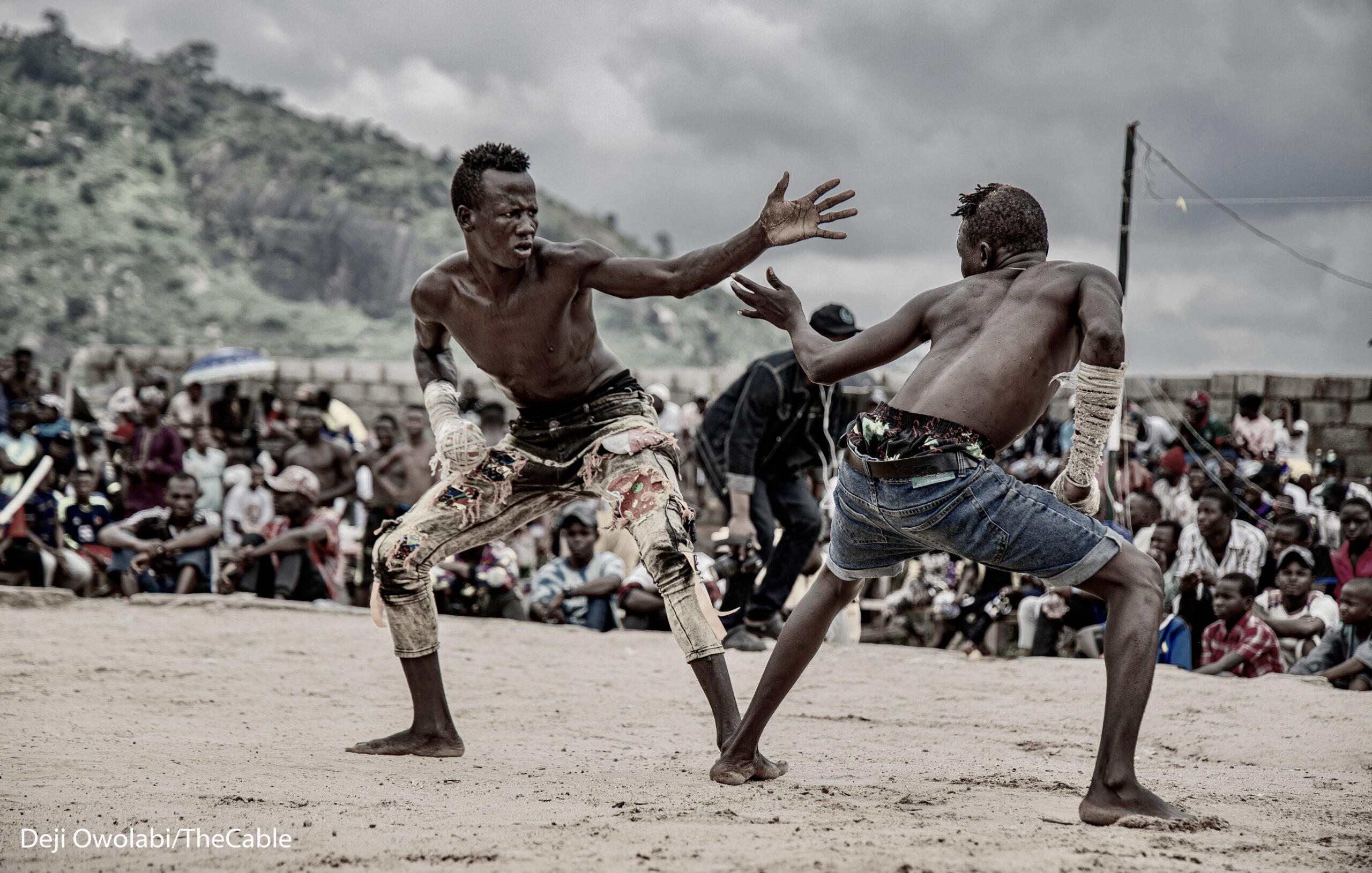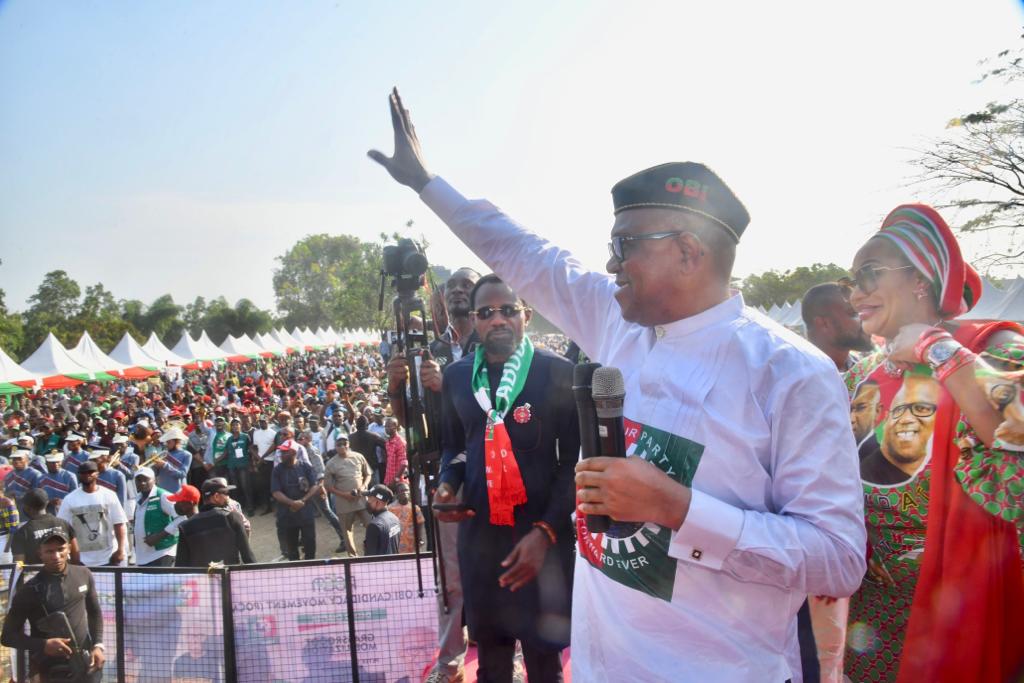You might never have heard of Pelé if his great-grandparents had been taken as slaves to Argentina instead of Brazil. At the end of slave trade in the 19th century, Argentina was systematically “whitened”. Blacks were reportedly sent to the hottest battlefields in the War of Independence from Spain. Mass migration of whites from Europe was encouraged. Discriminated against on the social ladder, Afro-Argentines resorted to marrying Caucasians to whiten the skin colour of their offspring. Many migrated to nearby countries where blacks were better accommodated. Today, Afro-Argentines are practically invisible. None is excelling in sport, politics, journalism or the arts.
You might never have heard of Pelé if his father, João Ramos do Nascimento (“Dondinho”), had not been forced to quit professional football following a serious injury. Dondinho redirected his energies to grooming his son in their poverty-stricken town in Minas Gerais. He didn’t have much money and could not afford Adidas kits for his little boy. He improvised with rags, old socks and grapefruit in the absence of a proper ball. It helped that Pelé saw Dondinho tearing up when Brazil lost the 1950 World Cup to Uruguay. That day, Pelé, just 10, vowed to himself that he was going to win the World Cup. He did. Indeed, thrice: 1958, 1962 and 1970. No other player has been able to do that.
You might never have known him as Pelé if he had had his way in secondary school. As a young man in love with football, he was a free-scoring striker. Jorge, his uncle, said Pelé was forced to be a keeper to reduce the advantage. He was good in goal, apparently, and his fantastic saves earned him the sobriquet “Bilé” — the name of his favourite player, the Vasco Da Gama goalkeeper. The prodigy was said to have mispronounced “Bilé” as “Pelé”. It stuck, becoming his nickname against his wish. He had punched his naughty mate who gave him the moniker and was suspended for two days by the principal. If only he knew that the name was going to be a universal and eternal brand…
Still, he preferred to be called Edson. He was born Edson Arantes do Nascimento on October 23, 1940. His father named him after Thomas Edison (without the “i”). You don’t know Edison? That was the American inventor whose imaginations led to the discovery of the light bulbs which contributed to the development of the television. His devices included the phonograph and the motion picture camera. He was a major factor in the industrialisation of the world and brought joy to millions of homes. The black Edson was an inventor in his own right as he turned football from a mere sport to an art and entertainment — in the words of Neymar, one of many football geniuses inspired by Pelé.
Advertisement
“Over the years I have learned to live with two people in my heart. One is Edson, who has fun with his friends and family; the other is the football player Pelé,” he once said in an interview. The Edson was not all fun though — he had plenty troubles. Married thrice, Pelé allegedly also had a daughter from an affair. He blatantly refused to accept her. He recognised seven children. Edinho, his goalkeeping son, was jailed for money laundering and drug trafficking in 2014. Pelé defended him stoutly, saying justice would be done. Edinho was sentenced to 33 years in jail, later reduced to 12 years and 10 months, and finally allowed some freedom in 2019 under the liberal “open jail” system.
Standing at just 5’8 (and to think his father was a six-footer), Pelé did not have a centre of gravity as low as Maradona’s (5’5) or Messi’s (5’7), yet his ground control was phenomenal. He could dribble through a maze. He could make defenders look grossly incompetent. He could outjump six-footers and nod the ball into the net with his accuracy, timing and altitude. He could shoot with either foot with equal power. He did score plenty goals. Although the records are disputed because some matches were classified as “unofficial”, he is credited with scoring 1,279 goals in 1,363 matches. No footballer is anywhere near the total or the average. There is no stat on his assists — which must have been plenty given that he played as a No 10. I would guess he assisted more than he scored.
Pelé’s first international match for Brazil was in July 1957. Brazil lost 2-1 but the 16-year-old got the first of his 77 goals in 92 matches for his country, the highest average of any regular international. By comparison, Cristiano Ronaldo has scored 118 goals in 196 matches. Pelé promptly congratulated the Portuguese when he broke the record in March 2021. “Life is a solo flight. Each makes his own journey. And what a beautiful journey you are having! I admire you a lot, I love watching you play and this is no secret to anyone. Congratulations on breaking my record of goals in official matches. My only regret is not being able to give you a hug today,” Pelé said. It is a rare spirit. Pelé was rare.
Advertisement
The 1958 World Cup announced Pelé to the world. Having set a record of being the youngest goal scorer for Brazil the previous year, he became the youngest player to play at the World Cup. He was on fire, scoring a hattrick against France in the semi-final (the youngest player to achieve the feat) and netting a brace in the final against Sweden — the youngest player, at 17 years and 246 days old, to score in a World Cup final. Pelé was a one-club man, netting 618 goals in 636 official games for Santos, a club he joined when he was only 15. At 34 in 1975, he came out of retirement to help the US launch its professional “soccer” league, scoring 37 goals in 64 matches for New York Cosmos.
Pelé, 82, drew his last breath on December 29, 2022. He had been fouled in life’s penalty box by kidney failure and colon cancer. He scored the first penalty by overcoming the kidney disease, but he could not do a “panenka” with the cancer, much as he tried. Far and away, the former Brazilian sports minister has now gone to a land where he would never grow old. When Diego Maradona, the Argentine magician of similar repute, died in 2020, Pelé wrote: “One day, in heaven, we will play together on the same team. And it will be the first time that I raise my fist in the air in triumph on the pitch without celebrating a goal. It will be because I can finally embrace you again.” It is time.
Pelé, who popularised the phrase “The Beautiful Game” with his 1977 autobiography, ‘My Life and the Beautiful Game’, was very confident in his skin. He passionately celebrated goals scored by his teammates and comforted wounded opponents. Fans were engaged in fierce arguments over who was the Greatest of All Time (GOAT) between him and Maradona, but he never got involved. After Qatar 2022 World Cup where Lionel Messi (named after Lionel Richie, the American R&B legend) finally won the most coveted trophy in the world of football, his fans went to town declaring him as the GOAT, even rating him above Maradona, whose left foot made mediocre teams win trophies.
I do not participate in debates over who is the greatest when we are discussing cross-generational footballers. Maradona and Pelé did not play in the same era, unlike Messi and Ronaldo. I would not even compare Maradona and Pelé because circumstances and rules evolved over time. When Pelé was hitting the height of his power in the 1950s, substitutions were not yet allowed. The same Starting XI must finish the match, except in cases of serious injuries. It was only from 1958 that substitutes became a thing. Today, five changes are allowed during a match. Imagine the difference fresh legs can make to team output, compared to when everyone had to play for 90 minutes.
Advertisement
In the days of Pelé, crunchy tackles were very commonplace and there was little protection from the referees. It was called a “man’s game” — meaning it was not for boys with weak bones. Football prided itself as separating the men from the boys. It was not until 1970 that yellow and red cards were introduced. Pelé would probably have won four World Cups — he and his teammates were practically butchered by Bulgaria and Portugal in the 1966 tournament and were bundled out at the group stage. Pelé was particularly clobbered by the Bulgarians. Protection got much better for forwards as time went by. The introduction of cards made the creative players more adventurous.
Medical science is now a full-blown industry in football. Players are able to receive dietary support and health management that help prevent or minimise injuries — or ensure quicker recovery. This was not so in Pelé’s days when football was played with raw energy and only the fittest of the fittest could survive. It can be argued that things became easier for offensive players as football evolved. Shirt-pulling used to be normal, unlike now that it can lead to a penalty award. Tackles from behind were seen as part of football, but the rule today is that it is punishable with a red card. That is why I do not compare players who played in different eras under different rules and environments.
Brian Glanville, the famous British journalist, refused to acknowledge Pelé as the greatest footballer ever, saying he did not play in Europe. The European arrogance is, however, not shared by many European footballers, administrators, commentators and journalists. Pelé did not play in Europe not because he was not good enough. After all, Santos twice won the Intercontinental Cup in the 1960s by defeating the European champions. As Pelé said, he got many offers from Europe but he was very comfortable playing for Santos. In fact, Brazil’s military government declared him a national treasure for over a decade and that meant he could not be transferred to a club outside the country.
Pelé. Muhammad Ali. Bob Marley. These were the pioneer global black super stars. But while Ali and Marley vocally presented themselves as icons of the struggle for racial justice, all Pelé did was play football. His artistry and wizardry passed the message of black power to the whole world. Some felt he should have done more for racial struggles, but that did not stop them from loving him. We grew up adoring him, wanting to be like him, even though Pelé himself said, cheekily: “People always ask me: ‘When is the new Pelé going to be born?’ Never. My father and mother have closed the factory.” He was funny and had fun. He made the world a better place with his wit and feet.
Advertisement
AND FOUR OTHER THINGS…
GUNNED DOWN
The fatal shooting of Mrs Bolanle Kareem, reportedly pregnant with twins after eight years of marriage, has brought the issue of police brutality back to the front burner. Pray, when will this murderous menace be tamed? Meanwhile, why do hospitals still hesitate to treat bullet-wound victims? The normal, basic medical intervention would be to put the lawyer on oxygen support and stop the bleeding before referring her elsewhere. It is so important to address this lingering issue in order to save more lives. I have always argued that the efficiency of emergency services is a measurement of the quality of governance a society enjoys. The lady could still be alive. Sad.
Advertisement
BRIDGE NOT TOO FAR
The Fourth Mainland Bridge (4MB), which has been on the drawing board for decades but has been stalled partly by politics, is now looking like something that will become a reality someday. Lagos state government has announced CCECC-CRCCIG Consortium as the preferred bidder for the construction of the 37-kilometer road which is going to be tolled. It will start from Abraham Adesanya Estate in Ajah and traverse the north-west towards the lagoon shoreline of the Lagos-Ibadan expressway via Owutu/Isawo, Ikorodu. Except there are economic and political obstacles which often slow things down, I am quietly praying that 4MB will be delivered on time. Progress.
Advertisement
CHINA COVID CAUTION
At a time the country’s COVID cases are rising, China has decided to liberalise international travel. But the Nigerian authorities say they are not considering any restrictions on travellers from China. I find it very worrisome. Italy on Wednesday made COVID tests mandatory for travellers from China after half of passengers on two flights from the country tested positive. Although the COVID wave has gone down considerably globally, the fact that China, where the virus originated from, is recording increasing cases should raise our eyebrows. I know that a few people benefit economically from the pandemic but the interest of the majority of Nigerians must come first. Caution.
Advertisement
KOGI BLAST
On Thursday, there was a bomb explosion at the palace of HRM Ado Ibrahim, the Ohinoyi of Ebiraland, in Okene, Kogi state, while President Muhammadu Buhari was inaugurating a medical facility virtually next door. Although I am hearing different conspiracy theories, it is a known fact that Okene has been harbouring Boko Haram terror cells for decades. Those who attacked the Catholic Church in Owo, Ondo state, were traced to Okene. While not seeking to take anything away from the efforts of the security agencies, I am still wondering how much intelligence work is being done in Okene — which is nowhere near having a difficult terrain like Sambisa in Borno state. Baffling.
Add a comment







